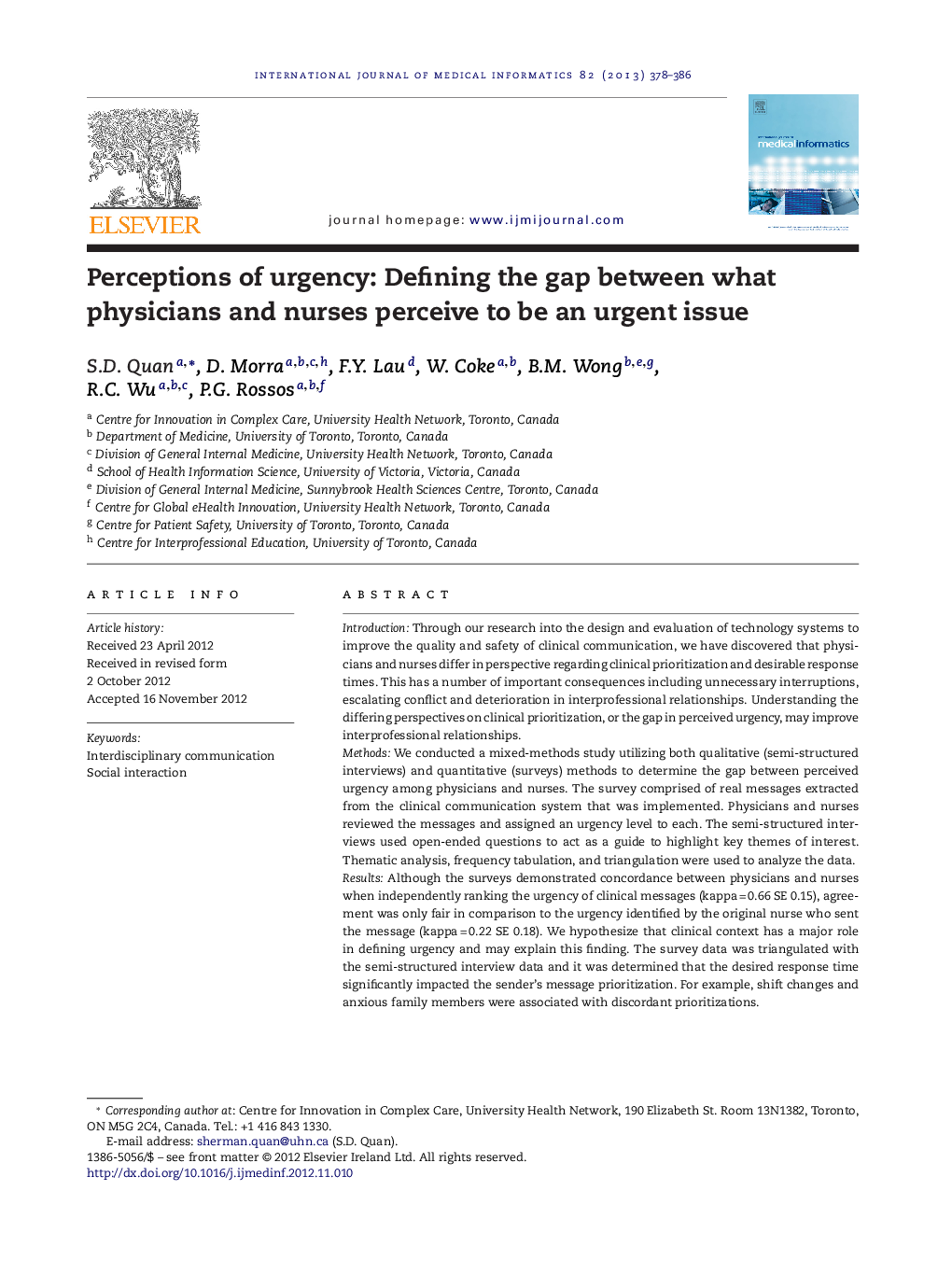| Article ID | Journal | Published Year | Pages | File Type |
|---|---|---|---|---|
| 516164 | International Journal of Medical Informatics | 2013 | 9 Pages |
IntroductionThrough our research into the design and evaluation of technology systems to improve the quality and safety of clinical communication, we have discovered that physicians and nurses differ in perspective regarding clinical prioritization and desirable response times. This has a number of important consequences including unnecessary interruptions, escalating conflict and deterioration in interprofessional relationships. Understanding the differing perspectives on clinical prioritization, or the gap in perceived urgency, may improve interprofessional relationships.MethodsWe conducted a mixed-methods study utilizing both qualitative (semi-structured interviews) and quantitative (surveys) methods to determine the gap between perceived urgency among physicians and nurses. The survey comprised of real messages extracted from the clinical communication system that was implemented. Physicians and nurses reviewed the messages and assigned an urgency level to each. The semi-structured interviews used open-ended questions to act as a guide to highlight key themes of interest. Thematic analysis, frequency tabulation, and triangulation were used to analyze the data.ResultsAlthough the surveys demonstrated concordance between physicians and nurses when independently ranking the urgency of clinical messages (kappa = 0.66 SE 0.15), agreement was only fair in comparison to the urgency identified by the original nurse who sent the message (kappa = 0.22 SE 0.18). We hypothesize that clinical context has a major role in defining urgency and may explain this finding. The survey data was triangulated with the semi-structured interview data and it was determined that the desired response time significantly impacted the sender's message prioritization. For example, shift changes and anxious family members were associated with discordant prioritizations.DiscussionThis study demonstrated that the perceived communication urgency gap between sending nurses and receiving physicians was primarily related to timeframe and context, not clinical condition. Most disagreement occurred when nurses used urgent messaging for time sensitive but not clinically urgent issues in an effort to expedite the resolution of their issue by the physicians. These results indicate the need for clinical communication systems to incorporate decision support around both clinical prioritization and expected response time in their design. Effective interprofessional communication is essential to the provision of safe, quality-based healthcare; these results highlight some of the sociotechnical aspects of health information technology implementation that must be considered.
► Physicians and nurses differ in perspective regarding clinical prioritization and desirable response times. ► The gap between what physicians and nurses perceived to be an urgent issue was primarily around timeframe and context, not clinical urgency. ► When addressing issues with clinical communication, it is critical to address the sociotechnical aspects of HIT implementation.
